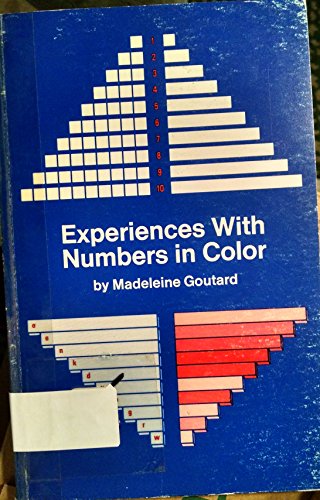 I'm rereading some of the chapters in Madeleine Goutard's Experiences With Numbers in Colour. Something jumped out at me. It was written in 1964, but in a way it's better suited to now, to 2016. The destiny of many if not most sets of Cuisenaire rods around in the 60s was to end up in the bottom of cupboards, along with the Dienes apparatus and Geoboards. What was not there, the ingredient that was needed to make the pedagogy work, was the idea and practice of number talks. Even now this is maybe not that widespread, but at least it's out there, with wonderful books like Intentional Talk leading the way. Now that we are using quick dot images, asking children to look at groups of dots and tell us how they see the total, we understand better the importance of what Goutard below calls "naturally ingenious combining".
I'm rereading some of the chapters in Madeleine Goutard's Experiences With Numbers in Colour. Something jumped out at me. It was written in 1964, but in a way it's better suited to now, to 2016. The destiny of many if not most sets of Cuisenaire rods around in the 60s was to end up in the bottom of cupboards, along with the Dienes apparatus and Geoboards. What was not there, the ingredient that was needed to make the pedagogy work, was the idea and practice of number talks. Even now this is maybe not that widespread, but at least it's out there, with wonderful books like Intentional Talk leading the way. Now that we are using quick dot images, asking children to look at groups of dots and tell us how they see the total, we understand better the importance of what Goutard below calls "naturally ingenious combining".I won't be using this particular part for a while as my five year olds will be doing a lot of playing and other things before we get to this stage. But you'll see what's happening. The class is motivated to explore something together, they are creative and playful in the way they find solutions. The emphasis is on doing and trying out rather than having remembered (although they evidently have a lot of experience with rectangles as products of two numbers).
The passage starts with Goutard introducing some rods:
She then introduced a black rod (7 white rods long)...
And not just flexibility of mental calculation. Flexibility in thinking. And also comfort with manipulating numbers. These days too it's easy enough to take photos of what the kids have made , get them up on the whiteboard, and come together to talk about the different representations together.











